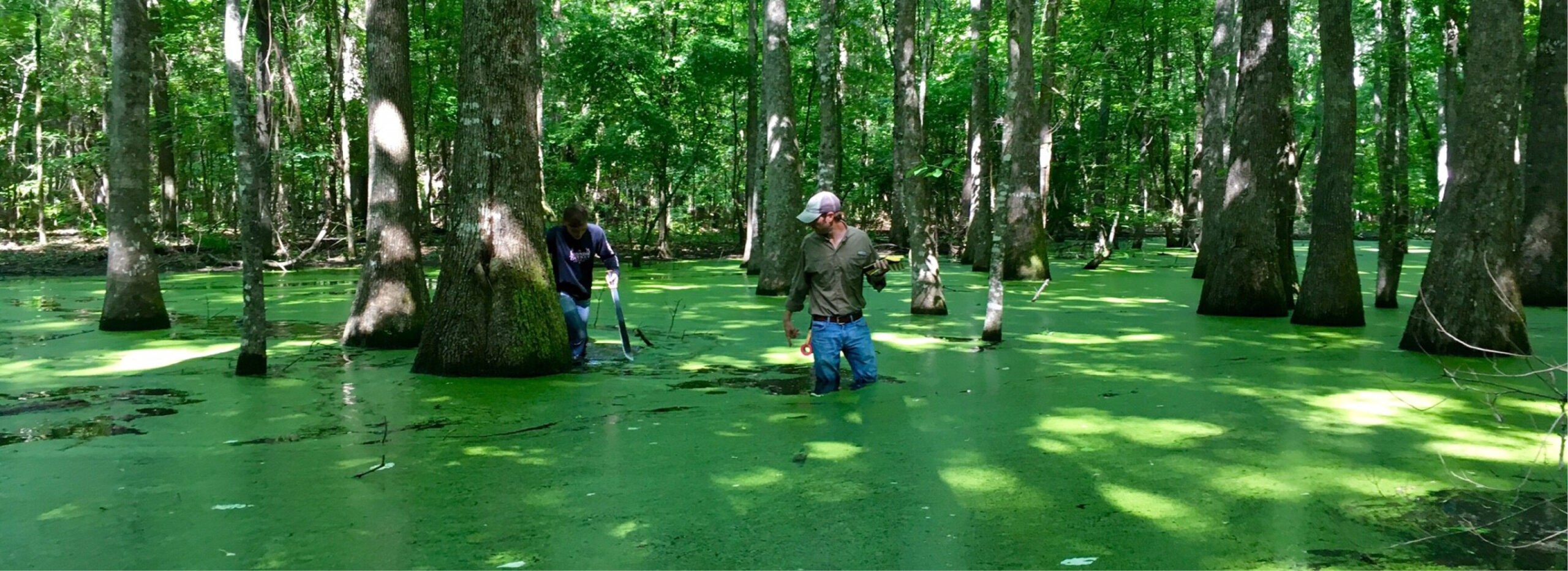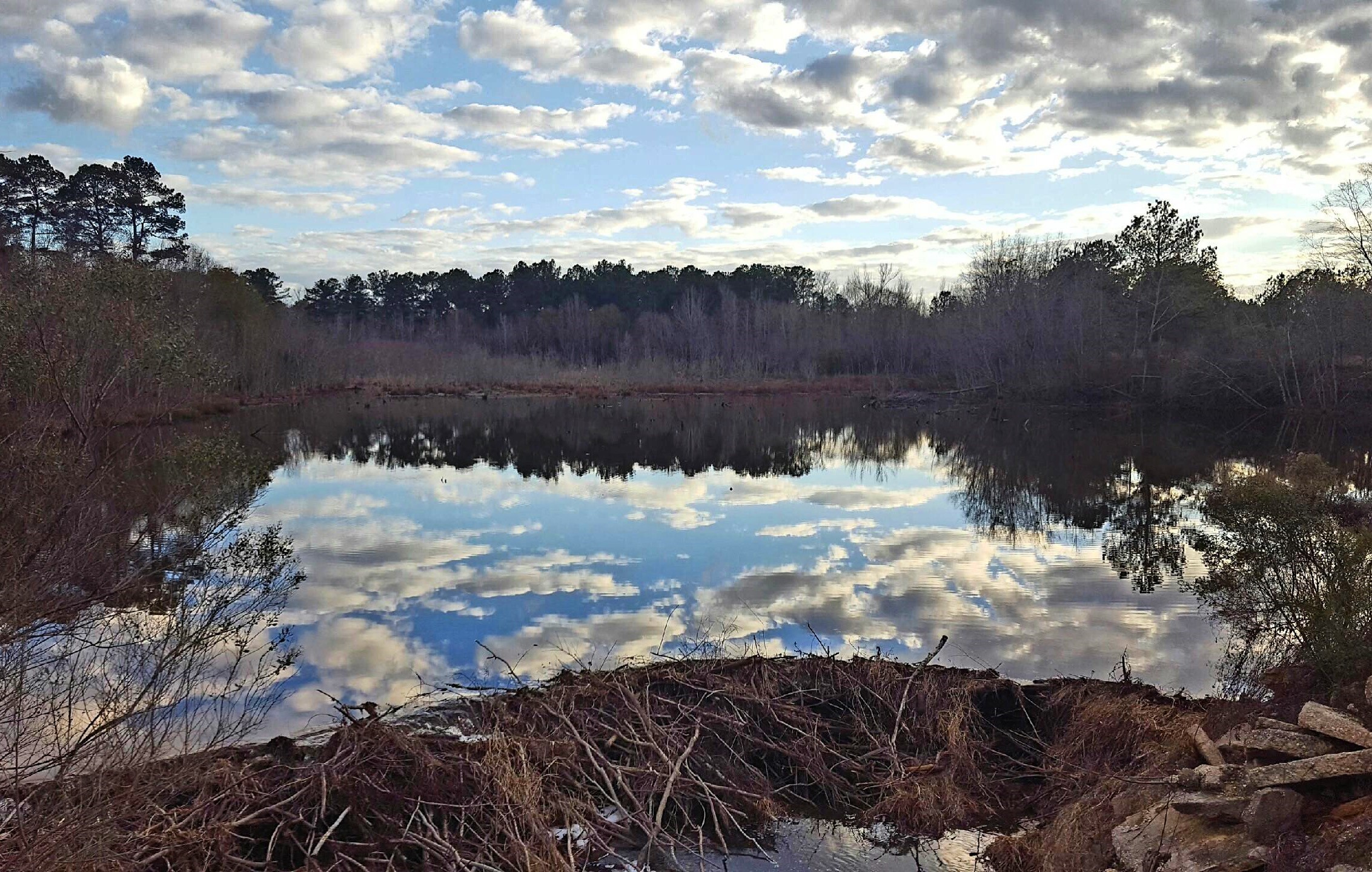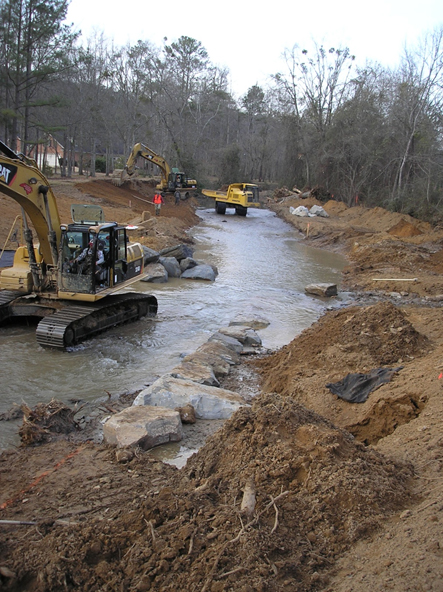
The impact of commercial and industrial development on wetlands and streams, and whether this development and protection of the environment can coexist, is a major topic of discussion right now. Mitigation banking provides an opportunity to offset some of the negative impacts development may have on the environment; however, the process remains a mystery to many. GMC Environmental is well-versed in mitigation banking and is answering a few questions to help shed some light on the process.
Q: What is mitigation banking?
Let’s say a company plans to build a new manufacturing plant, but construction of the facility is going to impact existing wetlands. The company can make up for the environmental impacts that will be caused in advance by purchasing “credits” from a mitigation banker. Mitigation bankers are people or entities that restore, enhance and preserve wetlands, streams or other natural resources as a means of generating credits that can then be sold to developers, like a company building a manufacturing plant, to offset the adverse impact on the environment.
Q: How does the process work?
The mitigation banker owns or purchases a tract of degraded wetlands or streams to restore. This property is the prospective bank site. Before the site can be permitted and approved for credit sales, an Interagency Review Team (IRT) made up of federal and state regulatory agencies has to approve the mitigation banker’s plans to restore, maintain and monitor the bank, in addition to approving the number of credits available for sale for that specific site.

Q: Who is responsible for actual restoration of the site?
The mitigation banker assumes all responsibility for not only the permitting and design process, including construction, but also for monitoring and maintaining the site long term. That’s why it’s important for the banker to have extensive experience with all facets of ecological restoration. Over the years, GMC Environmental has built a team capable of handling every aspect of the mitigation banking process, including initial site evaluation, coordination with regulatory agencies, wetland and stream design, construction and construction oversight, agency site visits, credit release activities, and long-term bank monitoring and credit sales.
Having an all-encompassing group of environmental engineers, ecologists, biologists, chemists, geologists and survey specialists allows us to tackle these projects from every angle. To date, we have consulted in the successful approval of eight mitigation banks throughout the Southeast and currently have several bank sites in various stages of the interagency review process. We have also evaluated bank sites throughout the region, including in Georgia, Mississippi, Florida, Tennessee and South Carolina.
Q: What are the benefits of mitigation banking?
One of the main benefits for the developer is the elimination of risk and responsibility. Once the developer purchases the required credits, all liability is legally transferred to the banker.

Mitigation banking also saves time and money. Purchasing credits typically costs less than “doing your own” mitigation in the long run, especially if investment in additional land is required for mitigation and the cost of the additional permitting process is added to the construction cost. Wetland and/or stream restoration also requires expertise and equipment the developer may not have. GMC Environmental has designed more than 135,000 linear feet of stream and constructed more than 40,200 linear feet, which has given us an in-depth understanding of these types of projects and what each will entail.
In addition, developers are able to cut their permitting times in half by purchasing mitigation credits as opposed to handling compensatory mitigation themselves.
Last, but certainly not least, mitigation banking protects and restores vital natural resources. Wetlands help protect and enhance water quality, provide habitats for fish and wildlife, regulate floodwaters and maintain surface water flow during dry periods. The process provides an opportunity for development to continue, while offsetting some of the negative impacts on the environment.
There are currently hundreds, if not thousands, of wetland and stream mitigation banks operated throughout the country. The growing popularity of this mitigation method further demonstrates mitigation banking as a cost effective means of restoring natural resources, reducing delays in permitting, eliminating the temporary loss of natural resources during development and assuring the long-term maintenance of these vital natural areas.
For more information about mitigation banking, contact Jof Mehaffey.